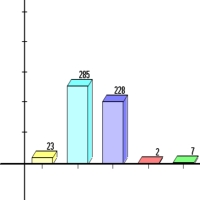"Newton was not the first of the age of reason. He was the last of the magicians, the last of the Babylonians and Sumerians, the last great mind which looked out on the visible and intellectual world with the same eyes as those who began to build our intellectual inheritance rather less than 10,000 years ago.”
John Maynard Keynes (1963)
I have caught up to the timetable given in the syllabus. Today we finished our discussion of Chapter 6, and began Chapter 7, getting through §7.4 - Circular Orbits.
As I said in class, Chapter 7 is where the "rubber hits the road" for some students. Thus I urge you to make sure you are on top of this material; otherwise any deficiencies will come back to haunt you when we get to Chapter 13.
We asked two question in class, available via the button. |
Initially about 50% of you answered that the two ships get hit at the same time. A closer runner-up was Answer B: the furthest ships gets hit first. The four students who answered D or E are running this joke into the ground! |
 |
After some discussion amongst yourselves, the most popular answer became the correct one: B. I am surprised that those of you who initially knew the right answer to this question didn't do a very good job of convincing your classmates. |
 |
About 75% of the class got the right answer: B - the acceleration is approximately g. We discussed this a bit in class, including once again firing off some nerf air rockets. I hope that by the end you all understand why this is correct.
| Pdf version of the PowerPoint on the side screens. | |
| Today's Journal. |
| The arrows let you jump to the previous/next class summaries. |